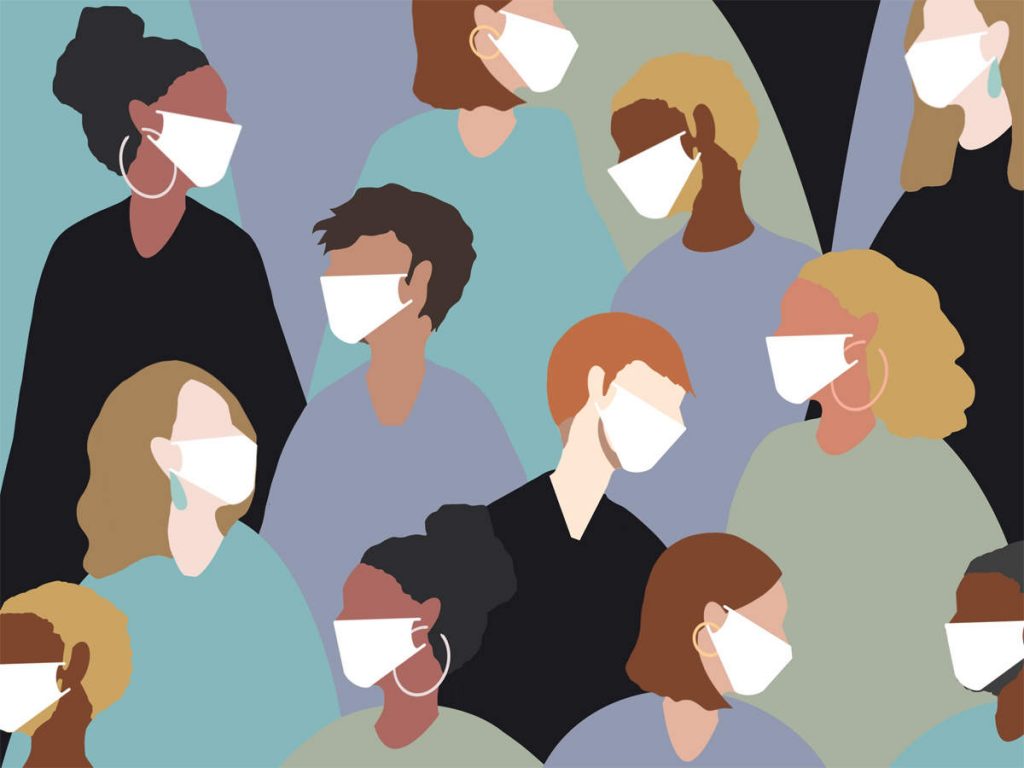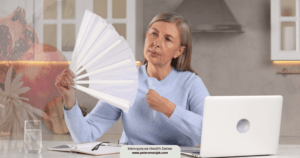Has Sweden’s controversial covid-19 strategy been successful?

BMJ 2020; 369 doi: https://doi.org/10.1136/bmj.m2376 (Published 12 June 2020)Cite this as: BMJ 2020;369:m2376
- Heba Habib, freelance journalist
- hebamhabib@gmail.com
Sweden has stood out in the global pandemic by eschewing lockdown and seemingly aiming for herd immunity. Heba Habib reports that Sweden’s public was supportive of the strategy, but is now paying a heavy price.
For months Swedish public health authorities have defended their controversial decision not to lock down the country in response to the global covid-19 pandemic. Schools were closed to children over 16 and gatherings of more than 50 people were discouraged, but bars, restaurants, and other public spaces remained open, and citizens were trusted to distance themselves.
At the heart of the government’s strategy was the implicit and controversial idea that, rather than contain the spread of disease, a country could achieve herd immunity by allowing a proportion of the population to be infected—at the expense of deaths among the vulnerable. “They did not want to put it bluntly, but seeking herd immunity was always inherent in the Swedish strategy,” says Anders Bjorkman, a professor of infectious diseases at the Karolinska Institute in Stockholm.
Herd immunity occurs when a large section of the population (generally considered to be between 50% and 90% depending on how contagious the infection is1) becomes immune to a disease or virus, therefore stopping its spread. This occurs when people have enough antibodies to repel the virus—either through having been exposed to the virus and survived, or through vaccination. Advocates claimed that the Swedish approach would be more sustainable in the long run than other countries’ harsher measures. And at first it seemed to be working.
Speaking at a press conference on 26 April, Anders Tegnell, the epidemiologist credited with the Swedish strategy, said that the rise in infections was beginning to flatten and had reached a plateau in Stockholm—the centre of the Swedish outbreak—as well as in other parts of the country.
As case numbers proliferated around the world and death tolls rose in neighbouring European countries, Swedish experts, and indeed the public, still seemed largely supportive of the strategy. According to a poll conducted between 17-19 April by independent agency Novus, 73% of 1000 respondents said they trusted the strategy of the Public Health Agency of Sweden.
But time has told a different story.
Explosive numbers
Sweden has the largest number of cases and fatalities in Scandinavia—around 37 000 confirmed cases at the time of writing, compared with its neighbours Denmark, Norway, and Finland which have 12 000, 8000, and 7000 cases, respectively. All three neighbouring countries adopted a lockdown approach early in the pandemic, which they are now slowly lifting. All three have since re-opened their borders, but not to Sweden.
Sweden recorded the most coronavirus deaths per capita in Europe in a seven day average between 25 May and 2 June. The country’s mortality rate was 5.29 deaths per million inhabitants a day (the UK ranked second with 4.48) according to Our World In Data,2 an online research publication based at the University of Oxford.
And what of herd immunity? An ongoing nationwide study conducted by the Public Health Agency of Sweden on 20 May found that just 7.3% of Stockholm residents had developed covid-19 antibodies by late April—and that was the largest number of positive results found in the country.
“It means that just like other European cities in hard hit countries, it will take a long time before the majority of the population has gone through the infection and are likely immune,” said Tove Fall, professor in epidemiology at Uppsala University.
On 11 May, the World Health Organization said that global studies had found antibodies in only 1-10% of the global population, with similar findings emerging from Spain and France. The agency warned against any country depending on herd immunity as a strategy.
Backlash
“I think we’re starting to see that the Swedish model maybe wasn’t the smartest,” said former state epidemiologist Annika Linde in a 19 May interview with newspaper Dagens Nyheter.3
More than half the deaths in Sweden have occurred in care homes for older people, something Tegnell has admitted is a “failure,” especially since a cornerstone of the strategy was protecting those over 70.
Anders Vahlne, a professor of virology at Karolinska, thinks that government advice misinformed the public by implying that those who don’t have symptoms are not contagious (the Public Health Agency of Sweden’s website states “as long as siblings or other members of the family do not show symptoms of disease they can go to school, preschool, or their workplace.”). “I think this amongst other things has caused a lot of older people in care homes to get sick and die and it’s quite unnecessary,” Vahlne told The BMJ.
IVO, the Health and Social Care Inspectorate, reported4 that 75% of the complaints it had received from the public and from care workers were about the lack of protective equipment such as facemasks in care homes. One care home worker, speaking anonymously, told The BMJ that “staff often work for 14 hours with substandard protection and continue working despite exhibiting symptoms.” The guidelines keep changing in accordance with the availability of material, they added.
“One should have known what poor preparedness we had in both healthcare and care of older people,” said Linde. “A lockdown could have given us a chance to prepare, think things through, and minimise the spread of infection.”
More worryingly, Swedish doctors have expressed alarm over the matter-of-factness with which authorities seem to be treating the plight of older and vulnerable people.
Yngve Gustafsson, professor of geriatric medicine at Umea University, noted that the proportion of older people in respiratory care nationally was lower than at the same time a year ago, despite people over 70 being the worst affected by covid-19. He expressed concern about the increasing practice of doctors recommending by telephone a “palliative cocktail” for sick older people in care homes.
“Older people are routinely being given morphine and midazolam, which are respiratory-inhibiting,” he told the Svenska Dagbladet newspaper,5 “It’s active euthanasia, to say the least.”
Last chance
Jon Tallinger, a specialist in general medicine and operations manager at a hospital in Tranås, believes that Sweden’s high death toll, particularly among older people, has less to do with the covid-19 strategy and is more a consequence of decades of privatising the healthcare system.
“The power has been taken away from the doctors and healthcare specialists and given to politicians,” Tallinger told The BMJ, “So now municipalities lack the resources to save the lives of older people and those at risk.” He added that thousands of lives could be saved if people in care homes with the virus received oxygen supplies. “Older people die because they do not receive the treatment they need.”
The government insists that Sweden’s high per capita death toll can’t be attributed to the lack of a lockdown. In a press conference on 29 May, Tegnell said the comparisons were unfair as “other countries are not reporting the actual death rates. Sweden is the best in the world in reporting the actual number of dead.” The government has given no indication that it will change its strategy beyond a ramping up of testing.
Yet even on that, Tove Fall said, “What is not so much discussed so far, is why Sweden is among the worst countries in Europe when it comes to testing.” According to Our World in Data, Sweden had carried out 23.64 tests per 1000 people as of 24 May, compared with 31.59 in the UK, 31.88 in Finland, and 44.75 in Norway.
Until April, only high priority groups—patients in hospital, high risk groups such as people over 70 or with underlying conditions, healthcare staff, and key workers—were being tested, and even then only those with severe symptoms. Minister of health Lina Hallgren pledged to increase to 100 000 tests per week by mid-May, but the government has fallen far short of that goal—recent numbers ranged from 28 000 to 33 000—sparking criticism from opposition party members and even the prime minister Stefan Lofven.6
Anders Tegnell said in a 3 June press conference that there had initially been problems with laboratory capacity “but also healthcare capacity because testing is a very complicated chain of events. You need to have staff and resources in each part of the chain.” He said that while the laboratory issue had now been fixed, the resources and training are still lacking.
Fall said the restricted and low levels of testing could have consequences for tracing and isolation efforts, and that this problem isn’t being prioritised by the authorities. “Testing of symptomatic cases in the population has not been done if the patient is not in need of hospital care or is not a healthcare worker,” said Fall. “Right now, recommendations for isolation of cases are based on symptoms only, and no household quarantine is recommended.”
Meanwhile, contact tracing has been largely abandoned since the beginning of March. This despite the fact that, according to Carina King, an epidemiologist at the Karolinska Institute, Sweden is very well positioned for contact tracing thanks to its commonplace digital identity system used to access public services and more.
Remorse?
On 2 June, Anders Tegnell was interviewed by Sverige Radio, and admitted there was “quite obviously a potential for improvement in what we have done.”6
Yet in a separate interview with the Dagens Nyheter, he said he still believed the basic strategy had “worked well.” “I do not see what we would have done completely differently,” he said, “Based on the knowledge we had then, we feel we made the appropriate decisions.”
“Other countries started with a lot of measures all at once,” he told Sverige Radio, “The problem with that is that you don’t really know which of the measures you have taken is most effective.”
“If we were to encounter the same disease again, knowing exactly what we know about it today, I think we would settle on doing something in between what Sweden did and what the rest of the world has done.”
Comments
Comment 1
Dear Editor
Your article does not take data into consideration. The deaths were at the front of the virus as in the rest of the world. With the summer spike, Sweden has not seen the deaths. Their economy is still vibrant and flourishing as the lockdown countries are suffering.
Competing interests: No competing interests21 July 2020Al FiedlerGrandpaFall Creek, OR, USA
Comment 2
Dear Editor
From Heba Habib’s article I understand that Sweden’s decision not to to mandate lock down has been a failure, because the population has not acquired herd immunity and because of the country’s high mortality rate. I think it would be interesting to ask the same question about lockdown: How successful has lockdown been?
A longitudinal study carried out in Spain this summer has revealed a seroprevalence of SARS-CoV-2 infection in the Spanish population of 5% (Pollán et al 2020). This is not much lower than the 7.3% seroprevalence rate for Stockholm. When compared with the much more relaxed approach of the Swedish government, it would appear that the nationwide lockdown imposed in Spain has had only limited effect in reducing exposure to the virus. At its height the rate of deaths caused by COVID-19 in Spain was alarming and news reports suggested particularly high mortality in nursing and residential homes. Is there a significant difference in death rates between the two countries?
Considering the high economic price we are paying, I think it would be interesting to study in more detail the effectiveness of lockdown in different countries in preventing the spread of COVID-19, compared with Sweden’s policy of voluntary social distancing. Which country has the most effective lockdown protocol and what can others learn from them?
References
Pollán et al (2020) Prevalence of SARS-CoV-2 in Spain (ENE-COVID): a nationwide, population-based seroepidemiological study. [Viewed 12th July 2020]. Available from: https://doi.org/10.1016/S0140-6736(20)31483-5
Competing interests: No competing interests. 12 July 2020. Andrew PickNurseBradford, United Kingdom
Comment 3
Dear Editor
I am specidically responding to the piece from the July 4th edition of the BMJ “How Sweden’s gamble failed to beat covid 19.” which seems to be a reprised piece from June. The title suggests that this is fact whereas the evidence would not appear to support this.
I am very surprised that such a piece should appear in a prestigious scientific journal such the BMJ and cannot believe this has been peer reviewed. It contains unreferenced anecdotal opinion with what appears to be significant bias. Statistics are specifically selected, such as one week’s death rate figures purportedly to evidence Sweden has a worse death rate that the UK, when in fact the UK’s death rate/milllion (according to worldmeter) is 20% worse than the Sweden’s.
Sweden has had no lockdown of schools, their economy has continued (with a downturn having a significant effect on the health of the population) and is not likely to see a surge in cancer deaths (predicted at about 35,000 in the UK).
Indeed, comparing graphs of the rolling 3 and 7 day totals of deaths, the UK and Sweden look almost indistinguishable. Certainly Sweden compares well with several European countries that have had a tight “lockdown” and is unlikely to see a “second wave”.
At the moment it seems to be widely assumed that “lockdown” is the only way, but as Sweden is the only “control” group it will probably be some time before we know some of the answers
This piece is tabloid jounalism of the worst sort, seemingly with a preconceived conclusion and ignoring the hard scientific evidence.
It has no place in a well respected and “scientific” journal such as the BMJ
Competing interests: No competing interests. 06 July 2020. Steve Bollen. Retired hospital consultantLeeds, Yorkshire. A highly political article from a freelance journalist.
Comment 4
Dear Editor
I am writing to share my dismay at the editorial policy of BMJ after reading the article written by the freelance journalist Heba Habib on 12th June.
This article was published under the Coronovirus section of the BMJ’s covid-19 hub, which claims to ‘support professionals and researchers with practical guidance, online CPD courses, as well as the latest news, comment, and research from BMJ.’ However, the article does not support any of these aims. It amounts to no more than a thinly veilled and political attack on the public health policy of the Swedish Public Health authority (Folkhölsomyndigheten) and Anders Tegnell in particular.
The inaccuracy and bias of this article is perhaps best evidenced by the rather glaring correction issued on 18th June 2020, just 6 days after it was published. Even this correction, which in its first instance had claimed that schools for under 16 years-olds had closed, was inaccurate. Swedish high schools did not close – lessons were conducted online but pupils were still able to collect their school lunches at school. The universities also remained open for teaching, although undergraduate courses were conducted online – some aspects of one-to-one teaching, e.g. where students conducted practical reseach projects, remained in effect.
Due to the tone and direction of the article, in my opinion that this was published with another agenda in mind. The fact that this article was written by Heba, who us a freelance journalist witout a declared scientific or medical qualification should be a warning sign for any editorial system. Heba has writen a number of such pro-lockdown articles in the past. No declaration about who paid for the article to be written was stated.
I think it is perhaps a sign of the times but it is deeply disturbing that the BMJ is willing to promote a feature article of this type.
Yours,
Jonathan D. Gilthope Ph.D.
Competing interests: No competing interests
Comment 5
The controversy about the Swedish Strategy is more to do with its critics
Dear Editors
I too would like to share my concerns about the issues raised by the author in this article.
I of course would like to state clearly that I have no ability in understanding the Swedish language, and hence this limits my ability to find answers to my own questions.
However I would like to point out that the author relied on the premise that the Swedish government’s strategy of managing the COVID-19 pandemic (misleadingly labelled as ‘herd immunity’ not just by inference in this article but also by many other governments and commentators who supported the alternative “containment” or “flattening the curve” type response) has failed and that the death toll is far higher than accepted in a comparison nation.
In this article these views were communicated in 2 consecutive paragraphs:
“Sweden recorded the most coronavirus deaths per capita in Europe in a seven day average between 25 May and 2 June. The country’s mortality rate was 5.29 deaths per million inhabitants a day (the UK ranked second with 4.48) according to Our World In Data, 2 an online research publication based at the University of Oxford.
And what of herd immunity? An ongoing nationwide study conducted by the Public Health Agency of Sweden on 20 May found that just 7.3% of Stockholm residents had developed covid-19 antibodies by late April—and that was the largest number of positive results found in the country”.
Fellow readers need to consider the following background before contemplating this argument:
1. It has been well known that the official UK figures of COVID-19 deaths have for some time been focussed on hospital data and excluded care home deaths. The Office for National Statistics on 18 April 2020 listed about 8000 more deaths with COVID-19 mentioned on the death certificates (21 284) than the official government figures based on hospital deaths (13 917) (ref 1). Even with an (inadequate) adjustment made on June 1 to account for previously unrecorded COVID-19 deaths, it is obvious that the statistics this article relies on (ref 2) are more closely aligned with official government-approved figures than ONS figures. Furthermore there are concerns that a significant proportion of deaths in care homes has not been properly assessed and tested for coronavirus. Thus it is possible that the true death rate in UK from COVID-19 is as much as 50% more than that of official figures. The Swedish statistics for COVID-19 also suffer from similar problem with under-testing and may have missed about 20% of COVID-19 related deaths (ref 3) but the true death toll proportionately would still be less than in the UK and hence any inference that Sweden performed worse than the UK on deaths per million population would be obviously open to challenge.
2. The “just 7.3% of Stockholm residents had developed covid-19 antibodies by late April” has been widely reported on most media outlets openly critical of the Swedish strategy but very little detail is actually available for scrutiny on how this statistic was obtained from the news. While it has been mentioned in one source that this is based on 1100+ blood sample testing for antibodies from the laboratories, few details are available in the English medium on how these blood samples were selected and if they were taken from well persons in the community. Keeping in mind the well known finding that the COVID-19 antibodies in confirmed infected patients take at least 3-4 weeks to be detected on current blood testing technology, the late April result would reflect infection in late March to early April, which is pretty much within a few weeks of the Swedish government announcing their strategy and measures which included voluntary self-isolation of individuals with respiratory symptoms, discouraging travel, encouraging work-from-home arrangements (with distance learning for over-16s) and physical distancing of individuals at risk in addition to ban on large gatherings (initially 500, then 50). Therefore Stockholm residents with COVID-19 antibodies would have been expected to be far more than 7.3% by the time this result was announced in late May 2020.
It is however true that the planned surge in antibodies testing has not taken place as much as required, thus exposing the Swedish Public Health Agency to significant criticism for its response to COVID-19 with inadequate up-to-date data to monitor the immunity of its population to coronavirus.
What have the Swedes gained from their strategy? Their economy is expected to shrink by 6% this year and return to positive growth in 2021 (ref 4), just half of the UK’s expected 11.5% reduction in GDP this year.
And if the Swedish strategy did work without needing the vaccine the other countries are banking on, they would not have to lockdown as much for the subsequent waves of the pandemic.
The jury is still out on the Swedish Solution; perhaps the winner will take it all.
References:
1. https://indaily.com.au/news/world/2020/04/29/uk-virus-death-toll-feared-…
2. Our world in data. Daily confirmed COVID-19 deaths per million, rolling 7-day average. 2020. https://ourworldindata.org/grapher/daily-covid-deaths-per-million-7-day-…
3. https://www.wsws.org/en/articles/2020/04/30/swed-a30.html
4. https://www.dailymail.co.uk/news/article-8435589/Lockdown-free-Swedens-G…
Competing interests: No competing interests
Comment 6
Dear Editor
Your article does not take data into consideration. The deaths were at the front of the virus as in the rest of the world. With the summer spike, Sweden has not seen the deaths. Their economy is still vibrant and flourishing as the lockdown countries are suffering.
Competing interests: No competing interests
Comment 6
Dear Editor
I am specidically responding to the piece from the July 4th edition of the BMJ “How Sweden’s gamble failed to beat covid 19.” which seems to be a reprised piece from June. The title suggests that this is fact whereas the evidence would not appear to support this.
I am very surprised that such a piece should appear in a prestigious scientific journal such the BMJ and cannot believe this has been peer reviewed. It contains unreferenced anecdotal opinion with what appears to be significant bias. Statistics are specifically selected, such as one week’s death rate figures purportedly to evidence Sweden has a worse death rate that the UK, when in fact the UK’s death rate/milllion (according to worldmeter) is 20% worse than the Sweden’s.
Sweden has had no lockdown of schools, their economy has continued (with a downturn having a significant effect on the health of the population) and is not likely to see a surge in cancer deaths (predicted at about 35,000 in the UK).
Indeed, comparing graphs of the rolling 3 and 7 day totals of deaths, the UK and Sweden look almost indistinguishable. Certainly Sweden compares well with several European countries that have had a tight “lockdown” and is unlikely to see a “second wave”.
At the moment it seems to be widely assumed that “lockdown” is the only way, but as Sweden is the only “control” group it will probably be some time before we know some of the answers
This piece is tabloid jounalism of the worst sort, seemingly with a preconceived conclusion and ignoring the hard scientific evidence.
It has no place in a well respected and “scientific” journal such as the BMJ
Competing interests: No competing interests









